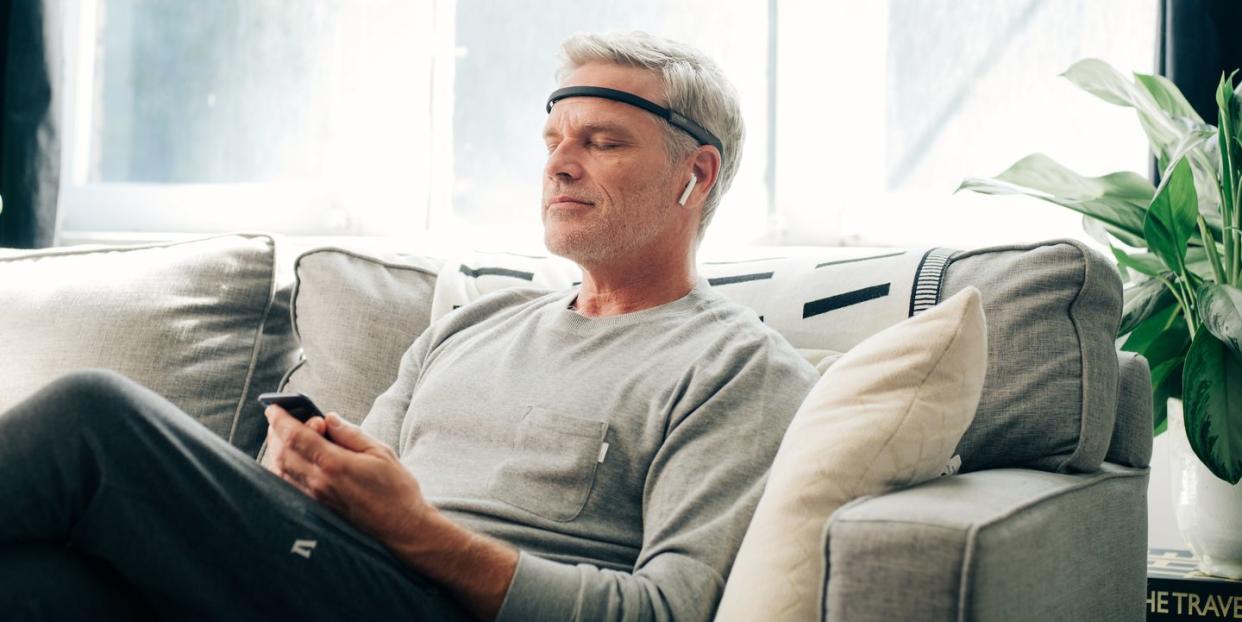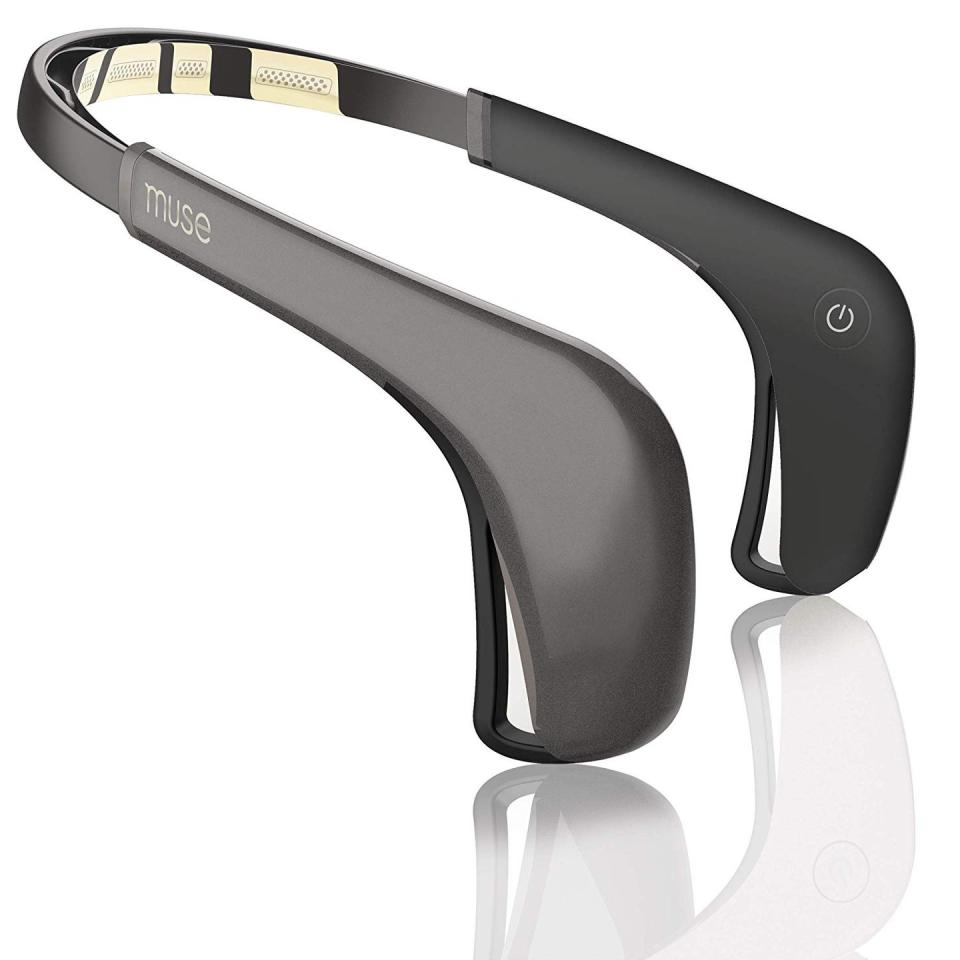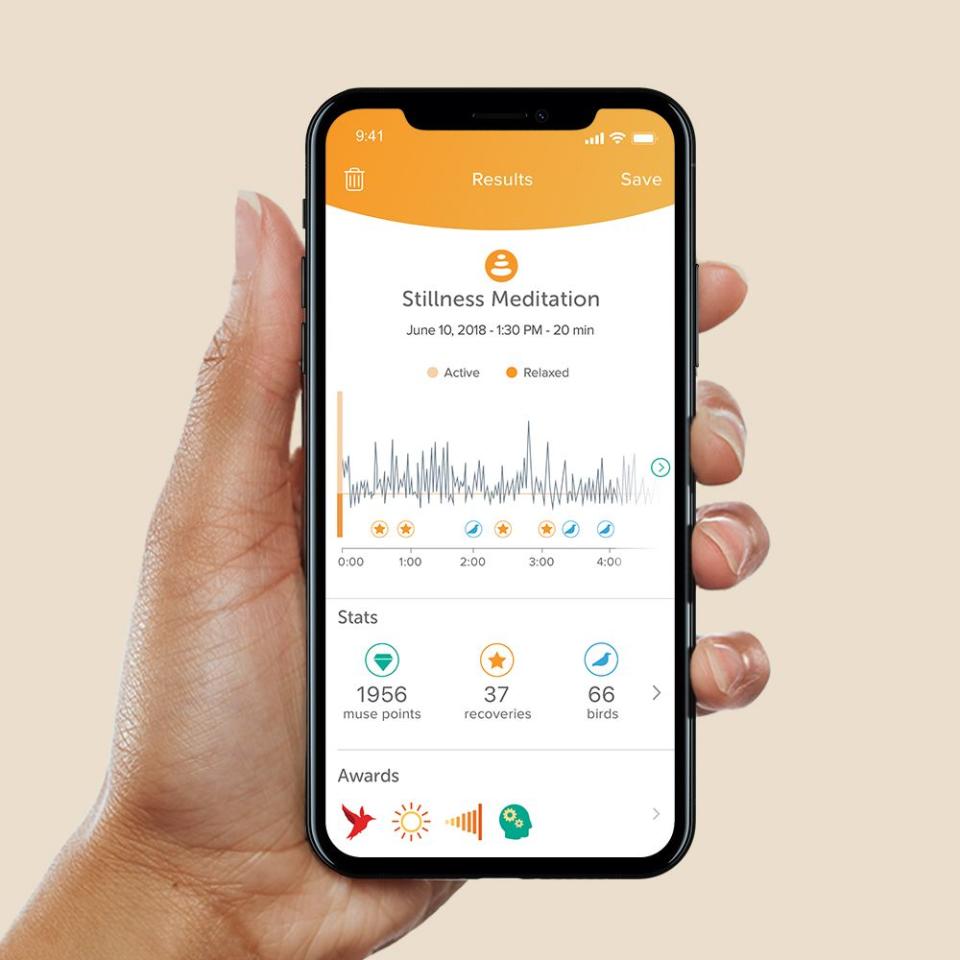This New Meditation Headband Will Tell You If You're Doing It Wrong

When the first Muse headband launched in 2014, it was unlike anything else on the market.
An easy-to-use, personal meditation device, it could measure your brain activity instantly via four electroencephalography sensors. An accompanying mobile app turned the EEG signals into audio feedback through the user's headphones.
This technological breakthrough coincided with the wellness boom that encapsulated all aspects of self-care, ranging from fitness retreats and kale smoothies to mindfulness studios.
Meditation, one of the primary pillars of self-care, has been been practiced for centuries but a new generation (my generation, the millennials) was just starting to really devote themselves to it.
I've long known about the benefits of incorporating meditation into a daily ritual, but ironically, the thought of achieving mental clarity by making such an effort to do so just sounded stressful to me.
The Muse solved this problem for many people by translating one's mental activity into weather sounds to help you find calm and stay focused.
Now, after being in development earlier this year, Interaxon has released the Muse 2, an updated version of the original.
The Muse 2 comes packed with advanced features and brain sensing technology that takes into account not just your mental activity, but your heart, body and breathing as well. This new model provides a more holistic approach to meditating so that you can get the most out of all the moving parts that make up the state of total relaxation and zen.

How Does It Work?
Once you download the app, you get to pick and choose which of the four senses you'd like the headband to monitor and measure for first.
Connect your headphones so that you can hear the sound of your mind and body as you go through each session. For example, if you pick the body setting, you'll hear the sound of windchimes should your posture move around too much. The more you stay still, the less sound you'll hear which means you're doing it correctly.
Indeed, the real-time feedback is there to guide you and keep you motivated during your meditation practice.
After each session, you can review your data and see how you did. You can use this data to set goals for yourself and track and measure your progress over time. Think of it as a MyFitnessPal-style tracker, but for your mind.

Who Is It For?
This is a great tool, particularly if you're a beginner or are trying to achieve proper meditation technique.
As someone who's attempted meditating on my own a few times in the past, it's difficult to really get a sense of how you're doing it right or not. For those who are a bit more experienced, this could be a welcome tool to incorporate and learn more about their habits.
While not everyone who already incorporates some aspect of mindfulness in their daily lives (whether it's simple breathing techniques or body postures) will need a device like this, it can be a helpful part of someone's foray into the world of meditation.
The Final Verdict
With three new brain-sensing tools and a redesigned accompanying app, you'll be getting the most out of all your bodily functions in relation to meditation and mindfulness.
Once you start really getting into the habit of each session, you'll find that it gets a bit easier each time. You'll start maintaining proper balance, whether it's with your breathing techniques or by listening to your heart rate, and you'll be fully in tune with your mind, body, and spirit with the data to prove it.
Personally, I'll be using this tool to keep track of my progress, but eventually I'll want to practice meditation on my own without having to rely on technology for help. If my charts are any indication, I'm well on my way to achieving zen – correctly, efficiently, and stress-free.
You Might Also Like

